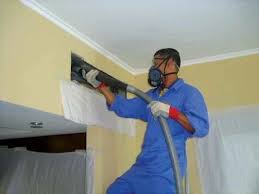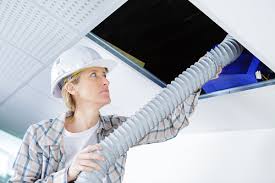Heating Duct Replacement: What You Need to Know

Strong 8k brings an ultra-HD IPTV experience to your living room and your pocket.
Your heating system plays a crucial role in keeping your home warm and comfortable during colder months. Central to this system is the ductwork — the network of passages that distribute warm air throughout your home. Over time, these ducts can deteriorate, become damaged, or lose efficiency. When repairs no longer offer a viable solution, heating duct replacement becomes necessary. Understanding when and why to replace your heating ducts can help you maintain comfort, improve energy efficiency, and ensure healthier indoor air quality.
Why Heating Ducts Need Replacing
Ducts are often hidden from sight, so it’s easy to forget about them. However, they are subject to wear and tear like any other part of your home. Over the years, duct materials can break down due to age, moisture, pests, or poor installation. When ducts are compromised, your heating system must work harder to compensate for the loss of airflow, resulting in higher energy bills and uneven heating throughout your home.
Common reasons for duct replacement include:
- Age: Ductwork that is 15 to 20 years old is more likely to have leaks, rust, or collapsed sections.
- Air Leaks: Gaps, holes, or poorly sealed joints can lead to air escaping into walls, ceilings, or under floors instead of heating your living spaces.
- Poor Insulation: Older ducts often lack proper insulation, which causes heat loss before air reaches its destination.
- Mould and Odours: Moisture buildup in ducts can promote mould growth and unpleasant odours, negatively affecting air quality.
- Pest Infestation: Rodents and insects can damage ductwork by chewing through materials or leaving behind waste.
Signs You May Need Duct Replacement
Not sure if your heating ducts need to be replaced? Here are some common signs to look out for:
- Uneven room temperatures
- Weak airflow from vents
- High energy bills despite regular use
- Persistent dust and allergens in the home
- Musty or unpleasant smells when the heater runs
- Visible damage to ducts during inspection
If you’re experiencing any of these issues, a professional assessment can help determine whether repair or full replacement is the better option.
Benefits of Replacing Your Heating Ducts
Replacing old or inefficient ducts offers several advantages beyond just fixing immediate problems:
Improved Energy Efficiency
New ductwork is designed to be airtight and well-insulated, significantly reducing energy loss. This means your heating system doesn’t have to work as hard, resulting in lower energy bills.
Better Indoor Comfort
With proper airflow and distribution, you’ll notice more consistent temperatures throughout your home. No more freezing in one room and sweating in another.
Enhanced Air Quality
New ducts help prevent the circulation of dust, allergens, and mould spores. Cleaner air contributes to better respiratory health and fewer allergy symptoms.
Quieter Operation
Old or damaged ducts can produce rattling or whistling noises. New, properly installed ducts reduce noise and make your heating system run more quietly.
Extended System Lifespan
With efficient airflow and reduced strain on the system, your heater is likely to last longer and require fewer repairs.
What to Expect During Heating Duct Replacement
Replacing heating ducts typically involves several steps:
- Inspection and Assessment: A qualified technician will evaluate your existing ductwork to identify problem areas and determine the extent of replacement needed.
- Custom Design: New ductwork is often custom-designed to fit your home’s layout, improving airflow and performance.
- Removal and Installation: The old ductwork is removed, and new ducts are installed. This may include new vents, returns, and insulation.
- Sealing and Testing: After installation, ducts are sealed and tested to ensure there are no leaks and airflow is balanced.
- Clean-Up and Final Check: Once everything is installed and tested, the technician will tidy the area and ensure your system is functioning correctly.
The duration of the process depends on the size of your home and the complexity of the system but typically takes one to three days.
Choosing the Right Professional for the Job
When it comes to heating duct replacement, selecting a qualified and experienced professional is essential to ensure the job is done right the first time. A reputable technician will not only carry out a thorough inspection but also provide tailored solutions based on your home's layout and specific needs. Look for providers who are licensed, insured, and experienced in duct system design and installation. Getting multiple quotes and asking about warranties or after-service support can also help you make an informed decision. With the right team on your side, you’ll gain peace of mind knowing your new ductwork is built to last and deliver reliable performance through Melbourne’s unpredictable seasons.
Conclusion
Heating duct replacement is a smart investment for any homeowner looking to improve energy efficiency, indoor comfort, and air quality. If your ducts are old, damaged, or simply not performing as they should, replacing them can offer immediate and long-term benefits. With proper assessment, expert installation, and quality materials, you can enjoy a warmer, healthier, and more efficient home environment all year round.
Note: IndiBlogHub features both user-submitted and editorial content. We do not verify third-party contributions. Read our Disclaimer and Privacy Policyfor details.



